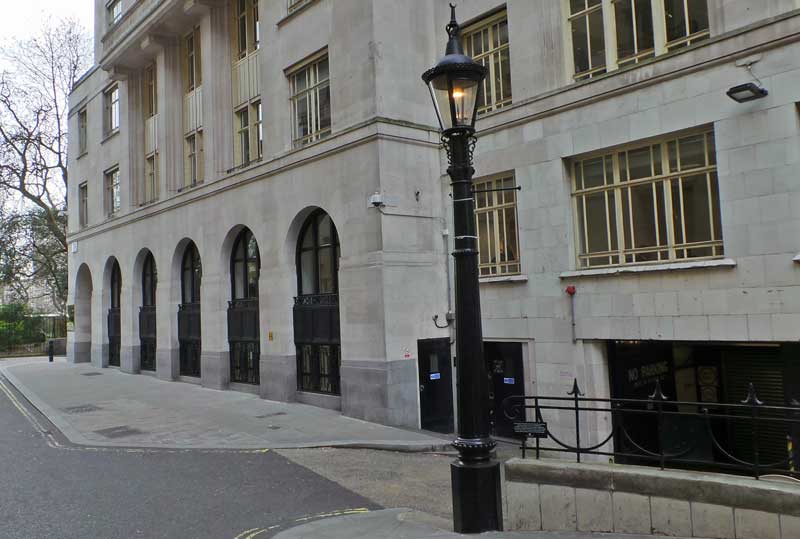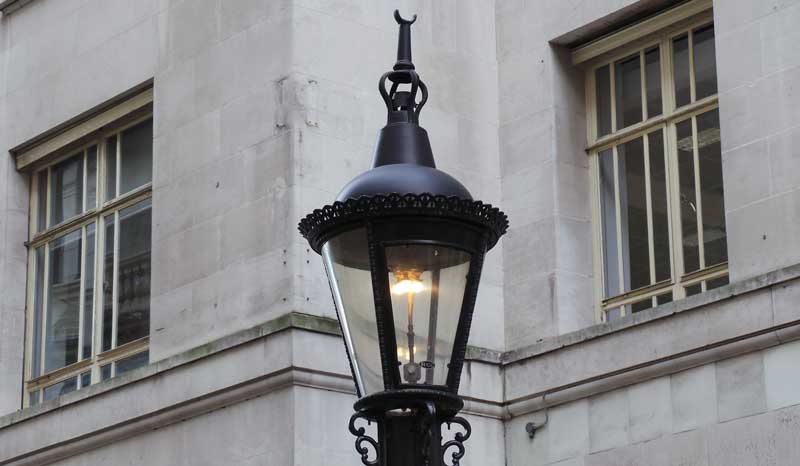
Take a walk down an innocuous side turn of London's Strand and you will encounter an ingenious example of Victorian, engineering inventiveness.
At first glance, you might not realise that what you are looking at is, in fact, a Webb Patent Sewer Gas Lamp, a contraption that was the brainchild of the late 19th century Birmingham inventor Joseph Webb.
Whilst you are digesting that little morsel of information allow me to expand a little.
You see, the Webb Patent Sewer Gas Lamp was a sewer gas destructor lamp, and this one now has the distinction (or should that be distinktion?) of being the last of its kind in London.
So, please don't go turning your nose up at such a rare survivor, which, at first glance, might give the impression of being nothing more than a run-of-the-mill backstreet London lamp post.

The purpose of this particular type of lamp wasn't to illuminate the street by night, although I should imagine it did an adequate job in that respect; but, rather, it was designed to remove and burn off sewer gases and their accompanying hazards.
When the first of the modern sewer systems were being laid beneath the streets of London in the late 19th century, they brought with them a major and dangerous problem in that methane gas could build up in them which, in turn, led to the alarming possibility of the subterranean sewers exploding beneath the feet of passersby above.
This problem was particularly prevalent on hills, such as Carting Lane.
One solution was to drill holes into the sewers and then to construct free-standing vent pipes at such a height as to allow the stagnant gases to disperse in the air above the heads of pedestrians; still, perhaps, not a particularly pleasant option, but far more pleasant than the effluent from below raining down on you from above should the sewer beneath your feet happen to explode.
From the 1859 to 1865, following the "Great Stink" of 1858, Sir Joseph Bazalgette developed a vast network of interconnecting underground sewers that criss-crossed London and brought the capital's waste into a low-level sewer that stretched beneath The Embankment, which then carried it eastward into the Thames Estuary, far enough down river from the main concentration of population.
However, there was still the problem of a build up of sewer gases to content with.
It was to tackle this problem that Joseph Webb came up with the idea for a device which he named the "sewer gas destructor lamp". To all intents and purposes these "destructors" were difficult to differentiate from the ordinary gas lamps that were to be found all over the streets of London. After all, they looked almost completely identical.
However, they served a completely different purpose in that they were sited over sewers and the lamp post actually vented the gas up from the sewer and into a perpetual flame located in the burner atop the post where it would be consumed in the flickering flame. Ingenious don't you think?
Webb's idea was that the sole fuel for his lamp would be the methane gas, which would be vented up from the sewer, thus enabling his invention to perform two useful tasks at the same time - burn off the sewer gas and illuminate the surrounding street.
Unfortunately, it didn't quite work like that.
For one thing, there proved to be insufficient methane in the sewers to keep the flame alive for the required 24 hours a day and, as a result, the flame would go out, and subsequent methane gasses would be released into the atmosphere, imbuing the surrounding streets with the delicate aroma of rotten eggs.
Webb went back to the drawing board and, in 1895, he came up with a new lamp, the flame of which was actually powered by town gas, just like the majority of gas lamps, thus allowing a continuous flame to burn 24/7. The heat from the flame created an up draft which then drew the gas from the sewer below and allowed it to be burnt along with the town gas, thus not only lighting the streets and ridding London of the danger from exploding sewer gas, but also destroying potentially hazardous microbes that might be present in the said gas.
And, since a single lamp had the capability to vent up to three quarters of a mile of sewer, it proved extremely economical as well as useful.
Everyone was happy, and London smelt better than it had done for centuries.
This type of sewer lamp was rendered obsolete as plumbing practices changed to favour venting the gas out above the roof tops via a building's plumbing system.
Consequently, one by one, the "sewer gas destructor lamps" began vanishing from the streets of London, until just this one on Carting Lane was left.
Sadly, this one took a knock in recent years when a truck reversed into it.
But, thankfully, it was restored and now, according to the accompanying plaque, "this cast iron ornamental lamp standard with original lantern continues to burn off residual biogas."
In consequence of its resident curiosity, and its unsavoury function, Carting Lane is known affectionately amongst those who work hereabouts as "Farting Lane." A story that is well worth repeating.